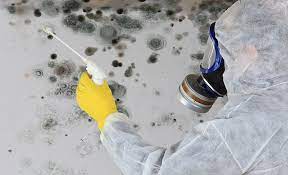
Mold testing is the process of assessing the presence and type of mold in a specific environment. It helps determine the extent of mold contamination and assists in identifying the appropriate remediation measures. Mold testing can be conducted in residential, commercial, or industrial settings.
The process of determining the type and amount of mould in a particular environment is known as mould testing. It aids in determining the level of mould contamination and the proper cleanup procedures. Testing for mould can be done in a household, business, or industrial context.
The significance of mould testing
Health Issues: Mould exposure can result in a number of health problems, such as asthma, allergies, and other allergic reactions.
Property Damage: The growth of mould can cause structural damage to things like furniture, buildings, and other objects.
Identification of Mould Types: Testing enables the precise identification of the many mould species that are present, including deadly mould species like Stachybotrys chartarum (black mould).
Mould testing categories

Air testing
This technique takes samples of the air to determine the amount of mould spores present in the surrounding area. It assists in determining whether the indoor air quality has been harmed.

Surface testing
Surfaces suspected of harbouring mould growth, such as walls, ceilings, or furniture, are sampled. Testing on the surface can find visible mould and determine how bad it is.

Bulk testing
entails removing actual samples of products like insulation, carpet and plasterboard for laboratory examination. Mould content and presence in the materials are determined by bulk testing.
Do not forget that mould testing is only the first step. In the event that mould is found, it is essential to deal with the underlying moisture problem and perform the necessary mould remediation to stop future growth and guarantee a safe and healthy atmosphere.